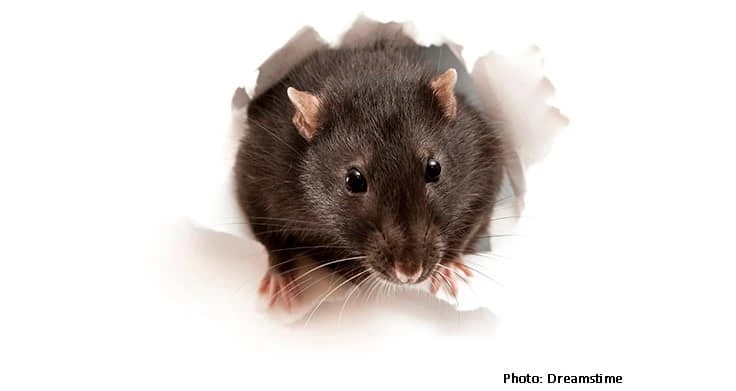
You’re not alone. Many a PMP has tossed and turned at night thinking about the next move in their high-level chess match with a rat. Where will they show up next? Which bait will entice them? What’s their escape route this time? Rats are smart, adaptable and elusive.
“We’ve got some great camera footage of Norway rats. Just when you think you’ve got them, they do something clever like building a cardboard bridge over the gel deterrent you’ve placed so they can walk safely across,” says Sean Crowley of Pest Assassins. “My partner and I have both been at this game for more than 20 years, and we never stop being surprised.”
Who’s not surprised by the shenanigans and superpowers of rats? Annie Raish.
Raish owns and operates High Desert Wildlife Control in Apple Valley, Calif., where rats seem to change their M.O. every five minutes. “As roof rats spread into the Mojave Desert region from other parts of the country, they face conditions that are nothing like what they’re used to,” she says. “The extreme temperatures and predatory environment push them to learn new survival skills quickly: They become profoundly neophobic and extremely aggressive, inhabit areas you wouldn’t expect, and change their food preferences in a heartbeat.”
By way of example, Raish recalls spending endless hours using a hot glue gun to affix seeds from the pods of Joshua trees to her traps, because it was all the roof rats she was treating wanted to eat at that particular time. “I approach them as a new species every time there’s an infestation because their behavior changes so quickly,” she says.
In addition to adaptability, rats have a variety of qualities that make them formidable opponents. They are:
- Grossly destructive. Buildings, infrastructure, electronics — all are fair game for rats’ powerful incisors. (“Rodent” derives from the Latin rodere, to gnaw or corrode.)
- Agile. Rats can jump, climb, swim and scurry to get where they’re going or escape danger.
- Sensitive. Rats are equipped with specialized “whiskers” (vibrissae) that help them detect and avoid dangerous surfaces, such as sticky rodent glue traps.
- Omnivorous. Rats can and will eat anything that’s available to sustain themselves, including cannibalizing their own species.
- Prolific. The math gets overwhelming quickly, because rats can breed at four to five weeks old, and each female can have up to six litters of a dozen pups a year. (Dust off your calculator and grab a cup of coffee.)
- Ingenious. Scott McGrath of McGrath Pest Control puts it succinctly: “You have to think like a rat: anticipate where he’s going, what he’s doing — it’s all detective work.”
Latest from Pest Control Technology
- Bell Labs Launches Mouse iQ, Powered by Bell Sensing Technologies
- WorkWave Appoints Robbie Hobbs as Chief Product Officer
- Truly Nolen David Schupp's Experience on Treating, Solving Invasive Termite Species
- Rollins’ 2024 Revenues Were Up 10.3% YOY
- Pest Management Foundation Calls for Research Proposals
- Target Specialty Products‘ ´What's New in Equipment 2025?‘ Webinar is Feb. 27
- The Invasive Asian Needle Ant
- Cutting-Edge Identification Tips, Technical Research Discussed at UK Short Course





